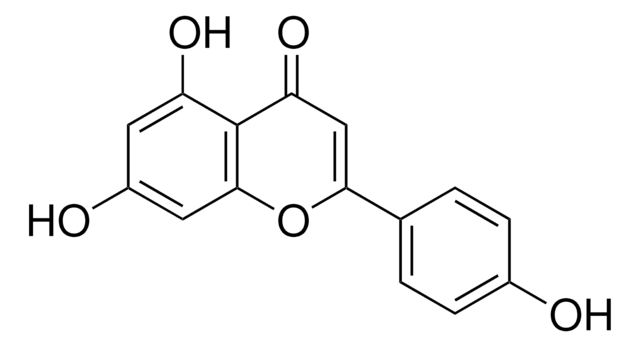44113
Cyclohexanol
analytical standard
About This Item
Produits recommandés
Qualité
analytical standard
Niveau de qualité
Densité de vapeur
3.5 (vs air)
Pression de vapeur
0.98 mmHg ( 25 °C)
Pureté
≥98.5% (GC)
Température d'inflammation spontanée
572 °F
Durée de conservation
limited shelf life, expiry date on the label
Limite d'explosivité
12.25 %
Technique(s)
HPLC: suitable
gas chromatography (GC): suitable
Impuretés
≤0.5% cyclohexanone (GC)
≤0.5% water
Indice de réfraction
n20/D 1.465 (lit.)
Point d'ébullition
160-161 °C (lit.)
Pf
20-22 °C (lit.)
Densité
0.948 g/mL at 25 °C (lit.)
Application(s)
cleaning products
cosmetics
flavors and fragrances
food and beverages
personal care
Format
neat
Chaîne SMILES
OC1CCCCC1
InChI
1S/C6H12O/c7-6-4-2-1-3-5-6/h6-7H,1-5H2
Clé InChI
HPXRVTGHNJAIIH-UHFFFAOYSA-N
Vous recherchez des produits similaires ? Visite Guide de comparaison des produits
Catégories apparentées
Application
Mention d'avertissement
Warning
Mentions de danger
Classification des risques
Acute Tox. 4 Dermal - Acute Tox. 4 Inhalation - Acute Tox. 4 Oral - Aquatic Chronic 3 - Eye Irrit. 2 - Skin Irrit. 2 - STOT SE 3
Organes cibles
Respiratory system
Code de la classe de stockage
10 - Combustible liquids
Classe de danger pour l'eau (WGK)
WGK 1
Point d'éclair (°F)
147.2 °F - closed cup - DIN 51794
Point d'éclair (°C)
64 °C - closed cup - DIN 51794
Choose from one of the most recent versions:
Déjà en possession de ce produit ?
Retrouvez la documentation relative aux produits que vous avez récemment achetés dans la Bibliothèque de documents.
Notre équipe de scientifiques dispose d'une expérience dans tous les secteurs de la recherche, notamment en sciences de la vie, science des matériaux, synthèse chimique, chromatographie, analyse et dans de nombreux autres domaines..
Contacter notre Service technique





